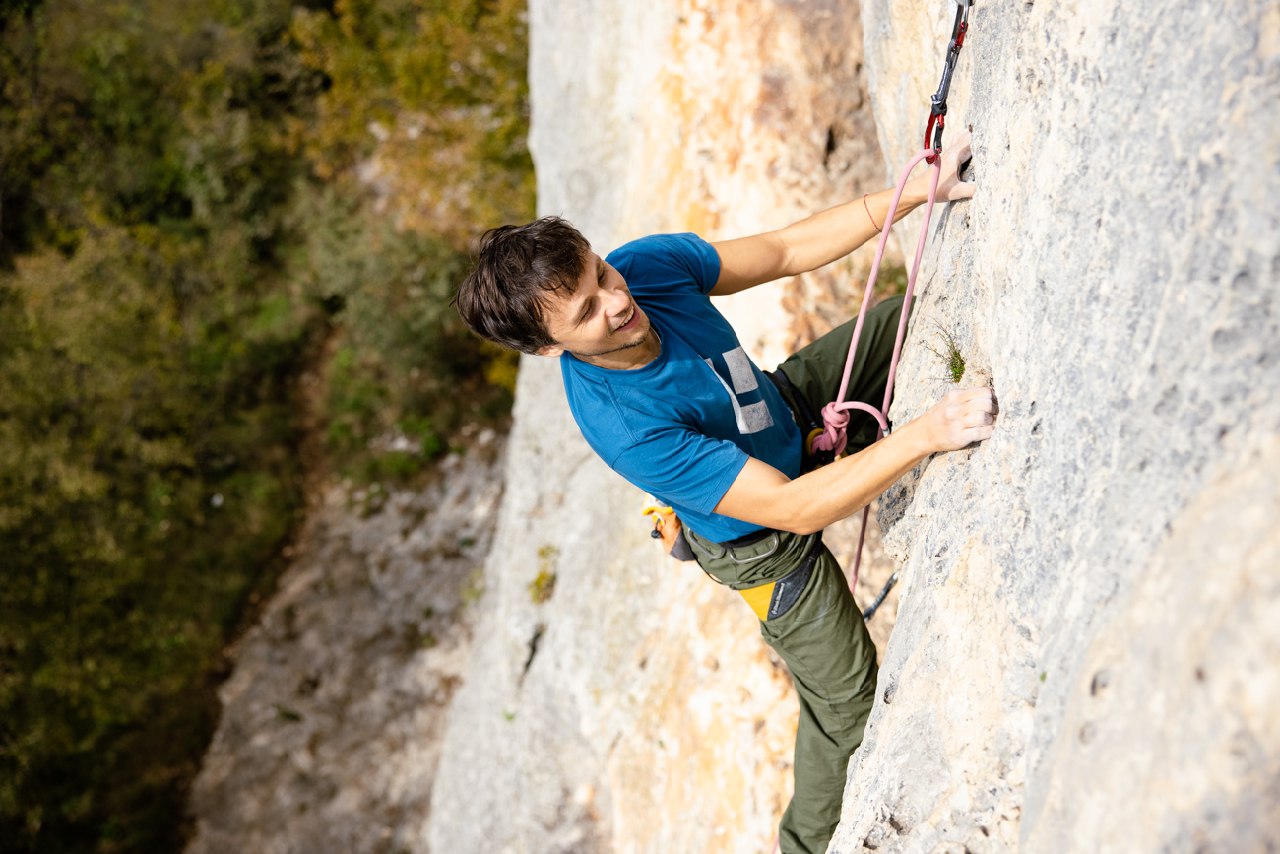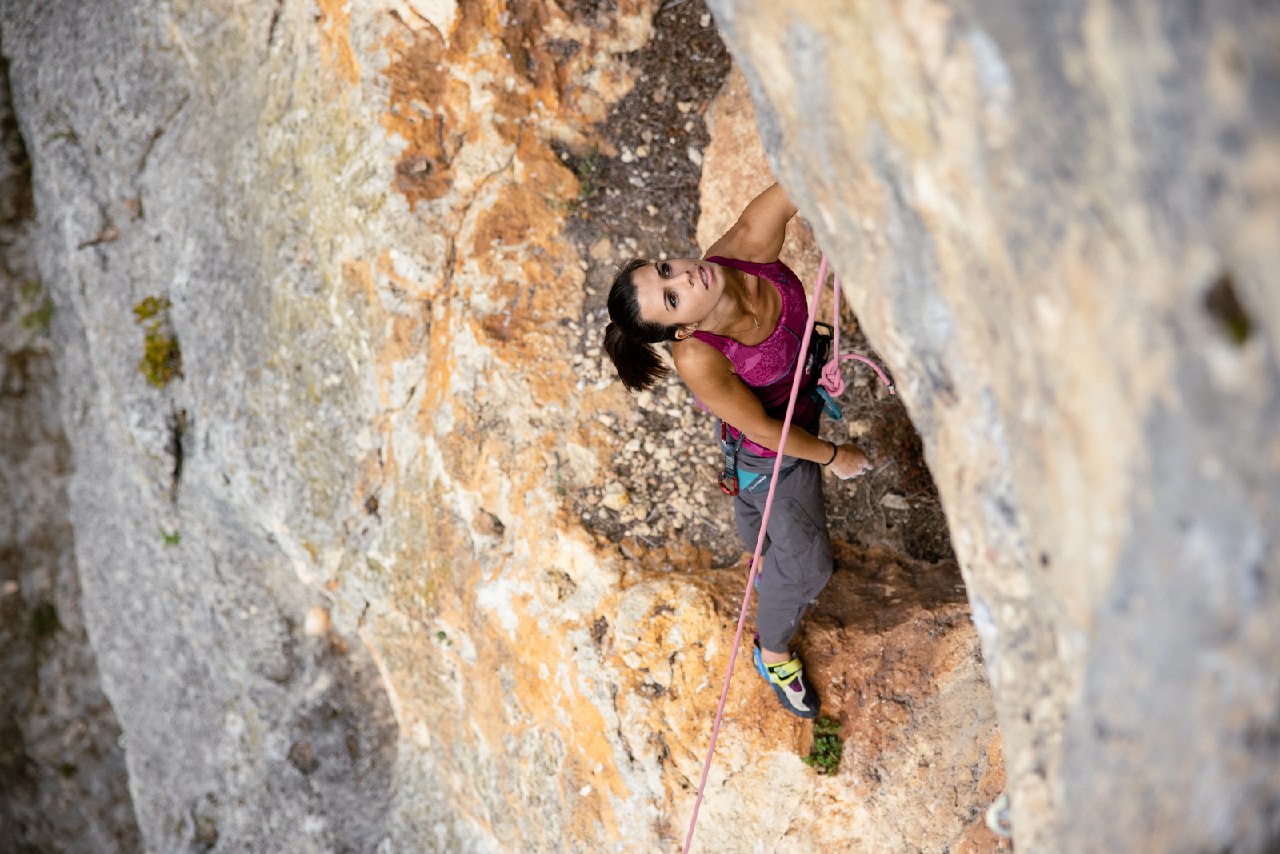We often hear about how people obsess over climbing grades and how they “pay respect” to a certain route, grade, or climber (you can find out more about this in this video by Magnus Mitdbo, where, among other things, he talks about grades). Even though we are aware we shouldn’t let numbers and letters influence us, we also know crossing our limits means being able to check that extra plus, letter, or number off our guidebooks.
We all have that objective we want, and most likely can reach. In his book “Training for Climbing”, which we frequently quote, Eric Horst argues that most climbers can easily climb 7as (he actually refers to 5.12, which ranges from 7a to 7b+ in the French grading system). He even wrote a whole book about his theory, “How to climb 5.12.”
Training, determination, and perseverance are just some of the factors that lead up to obtaining what might feel like an ambitious goal. In this article, we would like to share some practical tips to try to go for it, assuming you have already climbed some 6c and 6c+ routes. Those who climbed up to 6a or 6b would have to choose a slightly different and more complex approach.

Training, determination, and perseverance are just some of the factors that lead up to obtain what might feel like an ambitious goal.
7- Climb lots of routes under your grade limit (but not too many!)
If the higher grade you’ve climbed is 6c+, it won’t be easy to decide which grade can be considered slightly easier. It could be 6c, 6b+, or even 6b: as we all know, each route has its own features. A crux that some might find easy could be difficult or even impossible for others. Generally speaking, in this case, we can consider 6b and 6b+ a good compromise between easy, warm-up routes and those slightly harder ones that would need at least one rest to assess the movements and look for holds. Trying a lot of climbing styles on different routes, focusing on the flow, and perfecting the movements is a truly enriching strategy, that will allow you to improve quickly. Quoting Jollypower’s training plans, to prepare for this grade on the week dedicated to outdoor climbing you should climb eight or more routes each training day, without pushing your limit, climbing with ease, and focusing on breathing.
6- Try climbing something extreme every once in a while
If you’re lucky enough to climb with stronger climbers, you could ask them to try their projects at the end of the training session. You could try to top rope a vertical route, focusing on movements, but you could also gain extra points attempting to lead it from one spit to the next! Trying something extreme, yet suitable to your climbing style and not full of impossible bouldering problems, could give you a different perspective on your goal route, and sometimes help you find new ways to overcome the hardest movements.
5- Seek help from other climbers
Hanging out at the gym, you surely had the chance to meet the local climbers who have been climbing for ages and remember every single movement of each route they’ve topped. If you’re still looking for the perfect route for you, try asking them for advice and feedback on the local pitches: this will open an array of possibilities, but remember to choose according to your own personal preferences!

When you have fun you learn faster, better, and more easily
4- Invest some time looking for the best route for you
Once again, we would like to stress how the choice must be ultimately yours. You are the only one who knows exactly what kind of routes will suit your climbing style best. Trying a route because it’s a classic might not be a good enough reason to do so. Its start could prove to be extremely challenging for your height, something that is seldom taken into consideration, or maybe at some point, there is a hideous traverse you already know will be very challenging for you. Seek advice, but ultimately trust your instinct, choose the one, and start working it out just like pros do with their projects!
3- Follow a training plan and work on your route
Trying a couple of times per week your chosen route will help maintain a good “rhythm”, internalize the movements, and improve quickly, taking fewer resting breaks. We recommend alternating outdoor activity with a training plan, in order to avoid injuries and strength losses due to the continued repetition of the same route. Ask an instructor to help you create your plan. We like to call it “keeping the mood up”. Try also visualizing the movements even when you’re not on the rock. If you feel like it could be difficult to remember all movements, write them down at the end of your training session.
2- Every once in a while, add an element of surprise
Sometimes, when you have that one route in mind and you’re working it out really hard, you try to climb it every other day. That’s a great strategy to internalize the movements we can already complete and improve the ones we still find confusing, linking little by little all sequences. Sometimes though it might be good to unwind both the mind and the body and make a weekend getaway attempting outdoor bouldering or visiting a different crag: this will help you focus on something different for a change and go back to your project full of energy. Obviously, this doesn't go for everyone and all the time: if you know you only have two weekends left to try your project, it’s good to give it a go!

A relaxed attitude can be the key to success!
1- Have fun!
When you have fun you learn faster, better, and more easily. This concept lies at the basis of many learning approaches and works both for young students grasping new notions (for example, a foreign language) and adults like us, who are learning how to climb a wall. Having fun, taking your failed attempts with a pinch of salt, and buying your friends a drink every time you fall on the exact same spot will help you keep a relaxed attitude towards your goal. And that state of mind is probably the key to success!
